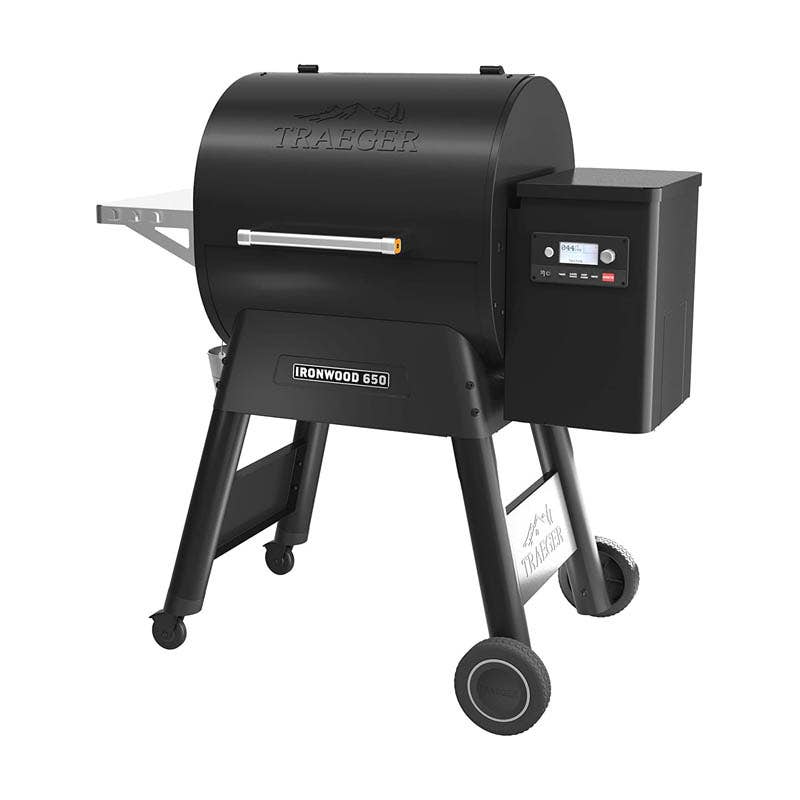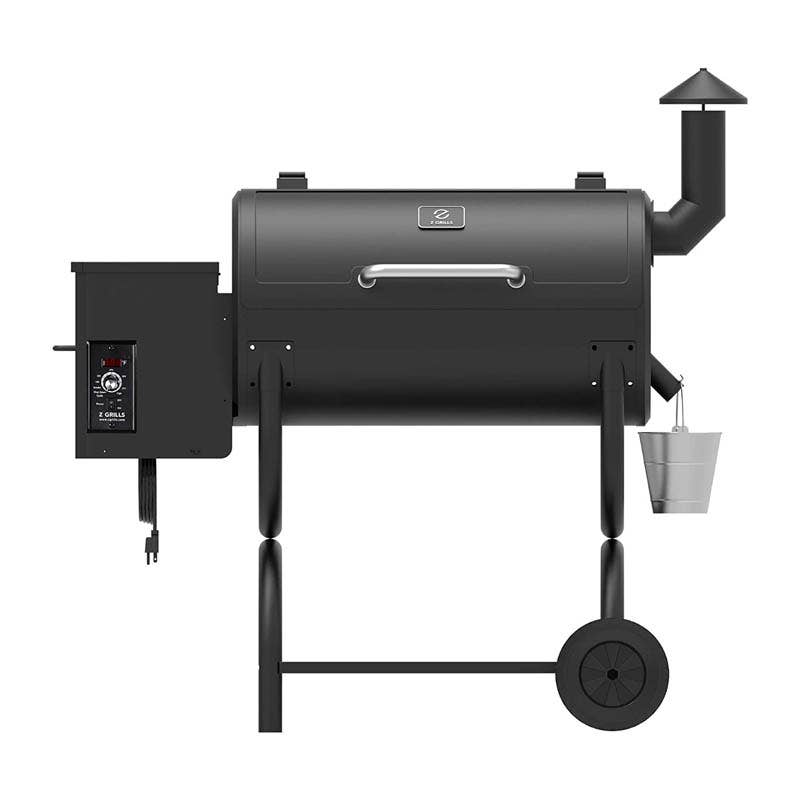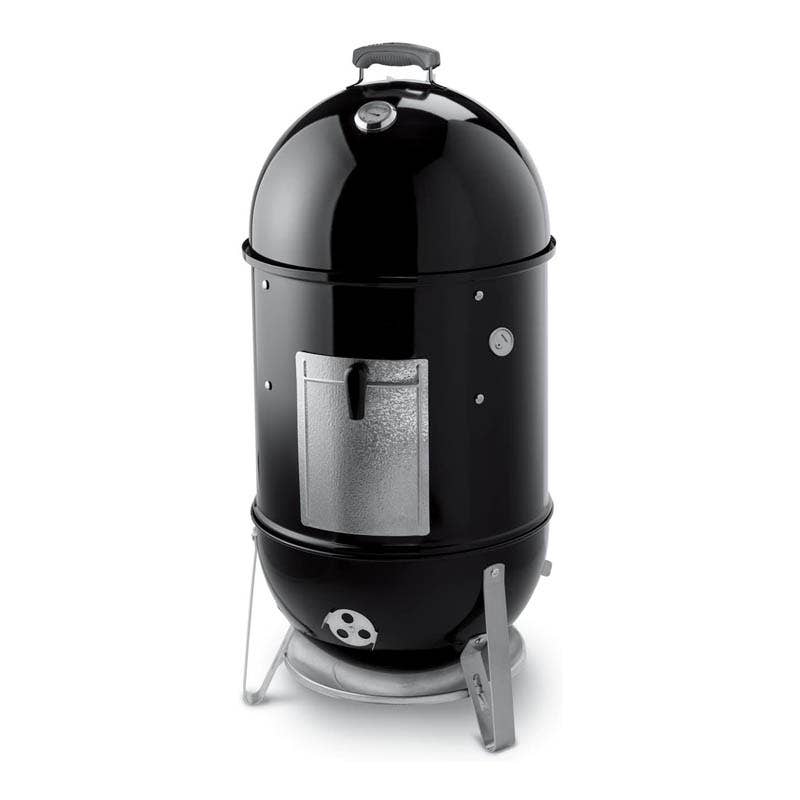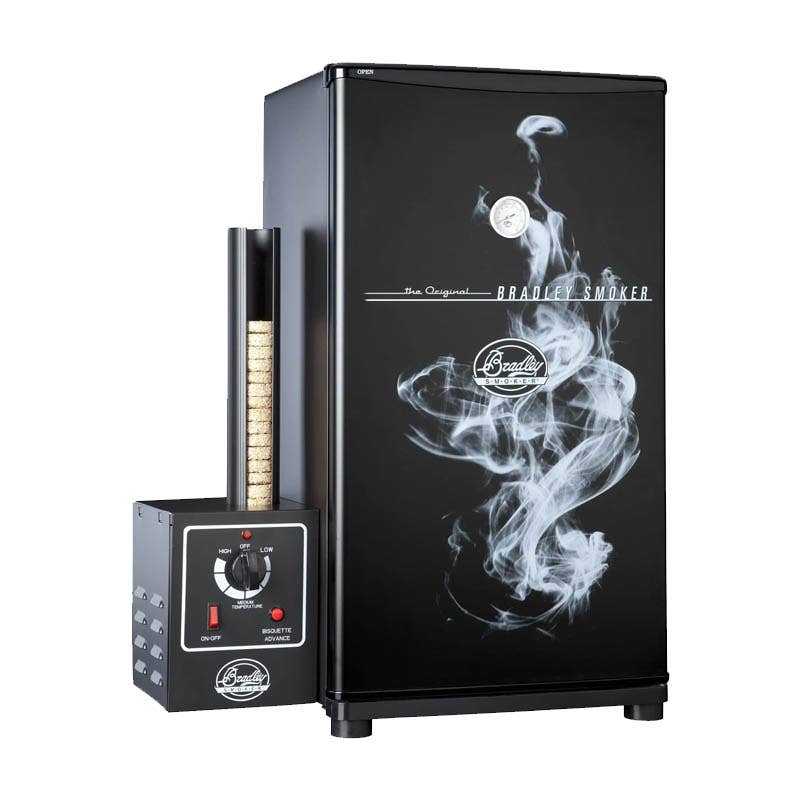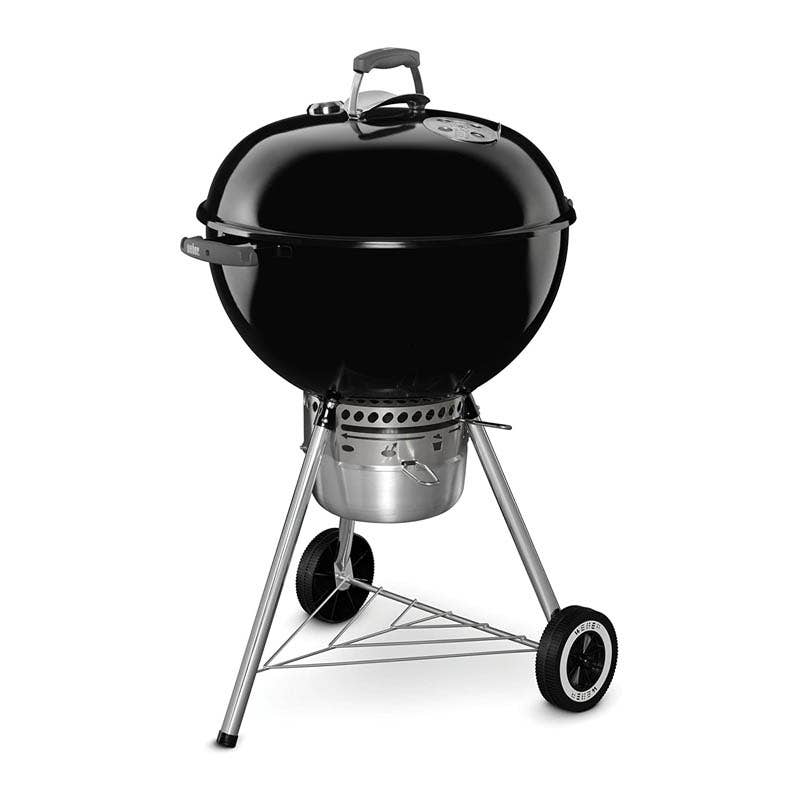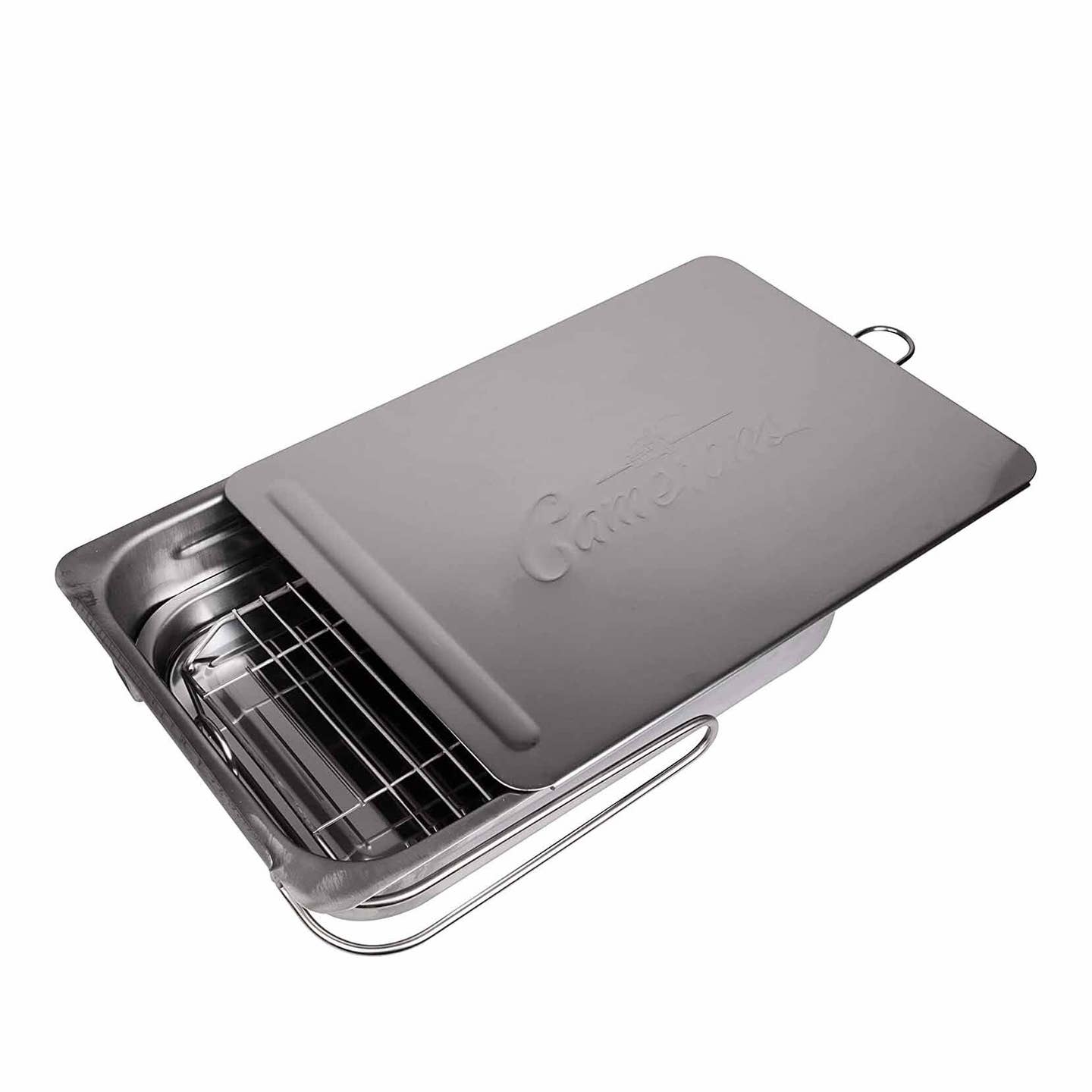The Best Smokers for True Grilling Enthusiasts
Barbecue legends share their absolute favorites.
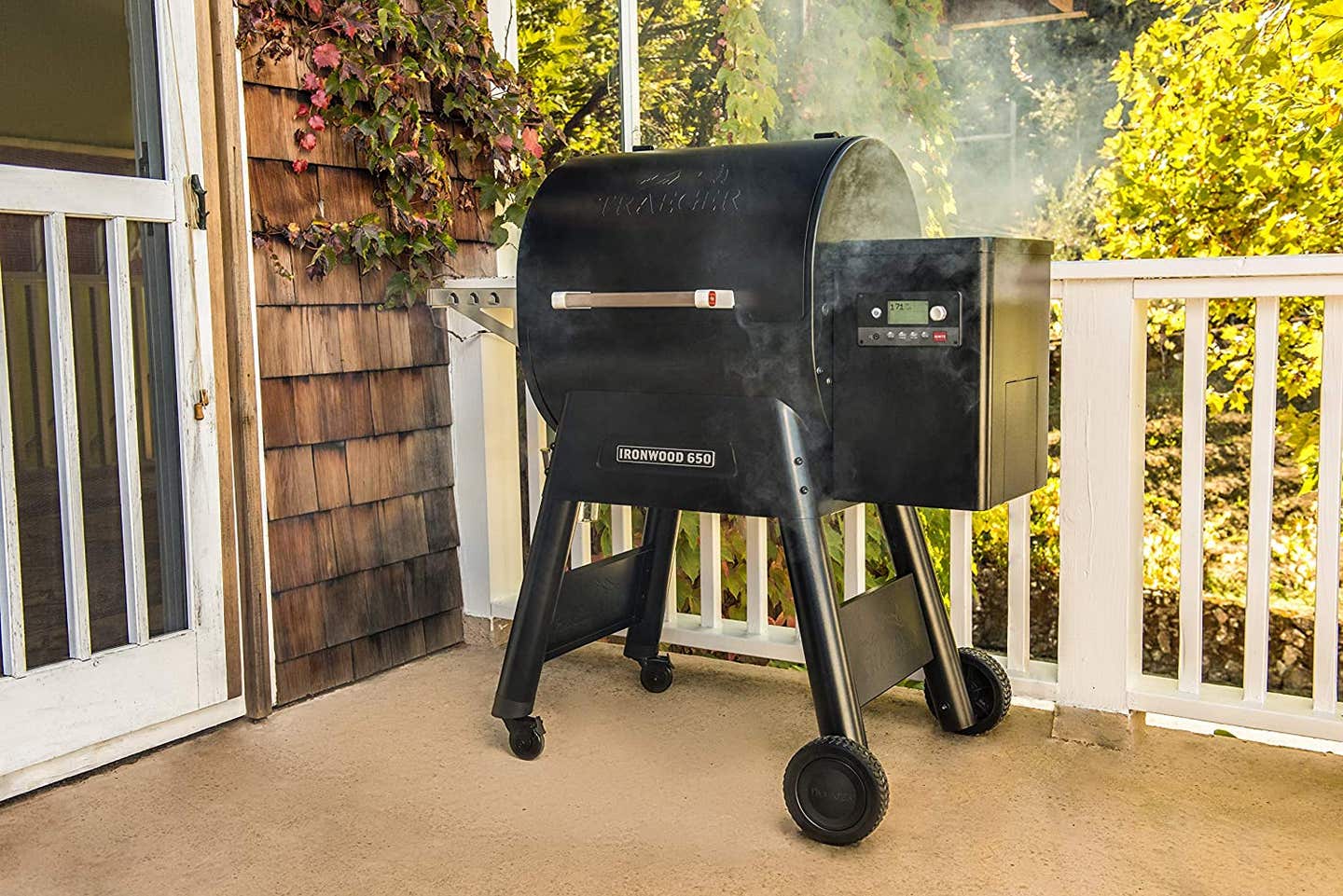
Cuts of meat and marinades aside, it’s the smoke that makes barbecue taste—and smell—so irresistible. But having a smoker in your home cooking arsenal is useful for a whole lot more than fall-off-the-bone ribs and flawless brisket. You can upgrade deviled eggs, create unique sandwich-elevating condiments, DIY your own smoked salmon, and so much more.
Smokers are a sprawling but nebulous category of culinary tool: The term itself is often used interchangeably with “grills” and “barbecues,” with many smokers making no mention of “smoker” in the branding at all. Some smokers are highly specialized, while others are more versatile multipurpose cookers—and what constitutes a “smoker” at all depends on who you ask. Traditionalists will say it’s the specific type of fuel, design, and smoking process that defines a smoker, while others view smoke simply as more of a flavor. And with so many ways to cook with smoke, the best smoker for you will largely depend on what you’re using it for, what your space and ventilation situation is like, and how dedicated you are to the craft.
There is one key requisite, however, for properly smoking food. According to Steven Raichlen, author of over 15 books about all things grilling, and TV host of series like Project Smoke and Barbecue University, it’s all about maintaining a low, constant temperature. The optimal heat level is 250°F, he says, with 225° to 275° as “the magical zone for smoking. You don't get a lot of smoke flavor at higher temperatures.”
Beyond that, though, smokers can vary wildly in terms of size, features, and price. Chef, food columnist, and cookbook author Elizabeth Karmel, who specializes in barbecue, grilling, and Southern food, says that for any type of grilling purchase, be it smoking-centric or otherwise, she has a simple rule of thumb: “Buy the biggest and the best that you can possibly afford, because the better the grill is, the more you're going to use it, and the more you use it, the better griller you’ll become.” Here are topnotch, expert-loved smokers that will seriously elevate your meals, through summer and beyond.
- Best Overall Smoker: Traeger Grills Ironwood 650 Wood Pellet Grill and Smoker
- Best Value: Z Grills ZPG-550B Wood Pellet Grill & Smoker
- Best Charcoal Smoker: Weber Smokey Mountain Cooker
- Best Electric Smoker: Bradley Smoker BS611 Electric Smoker
- Most Versatile: Weber Original Kettle Grill
- Best Indoor Smoker: Camerons Large Stovetop Smoker
Features to Keep in Mind
Type
The biggest difference between most smokers is the type of fuel they use, and how hands-off or high maintenance the smoking process is. First up is charcoal, that familiar staple of backyard cookouts and camping trips, which is a traditional, if finicky, approach to smoking. Raichlen calls it his “preferred fuel for smoking, with wood chunks or chips added as an enhancement,” which he loves for its process as much as the end result. “I'm a live fire guy: I love the act of lighting, building, and attending to a fire, and though it’s not necessarily the most convenient or easiest option, I think you get the best smoke flavor with that combination of charcoal and hardwood,” he explains. Charcoal is also used in pit barrel smokers: “You generally hang the food from a bar on the top, and charcoal goes in the bottom,” Raichlen says. “It's not quite as effective for smoking, but a lot of people like them because they’re very affordable.”
Then there are pellet smokers, which use puck-like compressed hardwood pellets for fuel (charcoal and sawdust pellets are options, too), which burn in a separate, lower compartment. The resulting smoke circulates throughout the smoker’s interior and cooks the food that’s on the grill grates above, kind of like a smoky convection oven. “An electric fan controls the temperature, so you get a very even, consistent temperature throughout your entire crop, which is very important,” says Karmel, who loves pellet grills for smoking. Raichlen, however, thinks they offer “great convenience, with perhaps a little bit less complex smoke flavor,” when compared to charcoal.
Electric smokers use metal heating elements, with wood pucks for the smoke element. “The real advantage is convenience, since you can set the temperature and time” instead of doting constantly on its progress, Raichlen explains. He finds, however, that with electric models, “the smoke flavor is not quite as good, pronounced, or complex as a wood chip or chunk-and-charcoal combination.” Propane smokers, also called gas smokers, “work on the same principle,” Raichlen says, “by using a heated burner to ignite.” It’s easier to control the temperature, and the preheating times are speedier on propane and electric models versus the charcoal or pellet versions.
Finally, if you’re already a fairly experienced griller and want to “graduate up to the big boys,” as Raichlen puts it, consider an offset barrel smoker, also called a stick burner smoker. They’re significantly pricier and require a lot of attention, and the name refers to the fuel type: The “sticks” in this case are whole logs, rather than charcoal or wood chips. Offset barrel smokers are typically made from steel oil piping and a 16 to 20-inch-diameter barrel, and feature an “offset” firebox. “Some of them have metal boxes instead of metal piping, but they all work the same way: There’s the firebox on one side, a cook chamber in the center, and a chimney on the other side that draws the air out,” Raichlen says. Despite their higher price tags and maintenance, “when you get them right, they produce really fantastic barbecue.”
Size & Capacity
Raichlen recommends considering a smoker’s diameter and height in relation to what you’re smoking to determine the right size for your needs. “If you're cooking brisket, that’s around 16” to 18” inches across, so you need at least that much space with a few inches on either side to let the smoke circulate,” he says. But you can also often modify ingredients to comfortably fit a smoker, he says: “A rack of ribs is around 20 inches, so if you were to get a really small smoker, you would probably need to cut the ribs in half, or else hang them,” which many taller smokers can accommodate.
But in the end, for Raichlen, as with Karmel, bigger is usually better: “You're going to be so happy that you have a grill with more capacity,” he says. “A lot of first time grill or smoker buyers are like, ‘Oh, I'm only gonna make hamburgers or hot dogs,’ but when you see that a lot of these grills are designed better than your indoor oven and cook really incredible food, you’re going to want to use it more and more and more.”
Versatility
While many smokers serve that one singular purpose, a standard kettle grill offers the most versatility, Raichlen says. If you use a large amount of charcoal, you’ll get a higher temperature, which is great for direct grilling, but if you opt for less charcoal, you’ll end up with lower heat, making it function equally as well as a smoker.
Portability
Most smokers are pretty stationary, but while designed for indoor use, a stovetop smoker is considerably more compact than outdoor-only options, and its portability factor means you can absolutely take it alfresco, too. Raichlen has used his on the side burner of his gas grill, and he says if your outdoor space is grill-less (like a rooftop, for instance, or a balcony) you can use a stovetop smoker on a simple click burner as the heat source.
Our Top Picks
Best Overall: Traeger Grills Ironwood 650 Wood Pellet Grill and Smoker
Best Overall
This is Karmel’s current favorite smoker: “The thing that really sold me is the ‘super smoke’ feature,” she says, which is also included in the brand’s Timber Line series. (The Traeger Timber Line 850 is one of Raichlen’s top pellet grill recommendations). “The complaint that people have about pellet smokers is that if you're going to do brisket, ribs, pulled pork, and more traditional barbecue items, they don't get enough of a smoke flavor. That super smoke button gives you an extra burst of smoke; if you cook below 225F, which you generally are doing when you're smoking meat anyway, it just gives a more intense smoke flavor,” she says. “The other night I did a tri-tip with cherry wood pellets and oh my goodness, the difference that a little extra smoke makes! It’s like cooking meat with salt or no salt.” She underscores that it’s worth the price tag. “Anytime anyone asks me, I try to steer people to spend a little bit of extra money to get a grill with super smoke function; because if you really are buying a pellet grill to smoke, that’s what you’re looking for.”
Best Value: Z Grills ZPG-550B Wood Pellet Grill and Smoker
Best Value
Karmel recommends the Z Grills brand for when “someone has a small space, or just wants to dip a toe into the whole idea of smoking,” but isn’t quite ready to commit to a four-figure price tag. She tested one of the brand’s models recently and found it to be “very functional, though it doesn’t have the super smoke mode I love.” At under $500, this pellet smoker is a great entry point into the barbecue game, but also boasts six functions in one, so you can use it as a grill or oven with reliable temperature precision.
Best Charcoal: Weber 18-Inch Smokey Mountain Cooker
Best Charcoal
“I test most of my recipes on a Weber’s Smokey Mountain grill, because so many people have them,” explains Raichlen. “They’re easy to operate and inexpensive,” he says of this “water smoker with charcoal that looks like R2D2 from Star Wars,” thanks to its capsule-shaped porcelain-enameled steel exterior. Inside, it houses two nickel-plated 18.5”-wide cooking grates, and there’s enough space to fit an entire turkey and an entire ham simultaneously. Raichlen calls this the “gold standard” smoker, and he likes its design and output so much, he owns six of them. There’s also a smaller 14” version as well as a bigger 22” model, if you’re looking for a bit less or more smoking space.
Best Electric: Bradley Smoker BS611 Electric Smoker
Best Electric
If you’re looking for an electric version, Raichlen says Bradley is the go-to electric smoker brand; he suggests the company’s Smoker Original, which is powered by ash-free proprietary wood bisquettes available in a dozen flavor varieties and capable of providing up to nine hours of continuous smoking. Its four dishwasher-safe racks, as well as meat hooks for pit-barrel-style smoking of foods like sausage and jerky, make it as versatile as it is efficient.
Most Versatile: Weber Original Kettle Grill
Most Versatile
If you’re just starting to dabble with smoking and are hesitant to commit the budget and space to a highly-specialized appliance, Raichlen recommends a classic Weber Kettle Grill. You can smoke on it by using “half the amount of charcoal that you normally would” and maintaining a very low temperature, while with the full amount of charcoal, it’s capable of “indirect grilling at a higher heat, direct grilling, or rotisserie cooking.” Or, he says, ”you could do what I call ‘caveman grilling,’ or grilling right on the embers, which is another form of smoking,” for making smoked vegetable dishes like baba ganoush. “If you lay an eggplant on the embers and you char the skin, it drives the smoke to the center of the eggplant, and gives you smoked eggplant flesh.” Purée it and combine with garlic, lemon juice, and olive oil, for the classic Mediterranean spread.
Best Indoor: Camerons Large Stovetop Smoker
Best Indoor
Don’t have any outdoor space in your abode? No problem, thanks to this stovetop model that Raichlen uses to make “totally amazing” smoked hard-boiled eggs, as well as smoked tofu and salmon (that he cures first). “It’s basically a rectangular box with a lid that pulls back. You put hardwood sawdust on the bottom, and there's a little drip pan and grate,” he says. Add whatever ingredients you want to smoke, and fire up the burner; “the smoke stays in the box until you open it, and just a little puff of smoke releases” that will quickly dissipate with an exhaust fan on a high setting. “For years and years, that's how I used to make my own smoked salmon, and it was really good!” Raichlen says. The Camerons smoker is designed for indoor use, but is easily brought outside, where it can be used with a simple camp stove or click burner as the heat source.
Ask the Experts
How does a smoker work?
While it depends greatly on the specific fuel type and design, smokers generally involve a low, steady heat source (whether that’s generated by charcoal, gas, wood logs, wood pellets, or electricity) and a closed chamber where smoke circulates and infuses into whatever food you’re smoking. Many foods are cooked in the process of smoking, too, but the technique can also be used to provide smoky flavor into pre-cooked or partially cooked foods.
How long should a smoker last?
“If you buy a good one, it should last pretty much forever,” Karmel explains, especially in light of the considerable investment factor of most smokers. “This is buying a major appliance!”
What are your tips for cleaning and caring for a smoker?
“A good smoker is built to withstand the elements,” Karmel says, and though she notes that brands do sell covers should you want to shield your smoker from snow, showers, and the like, it shouldn’t be necessary, from her experience: “I don’t use a cover and I never have, even when living in Chicago and New York, and my grills and smokers are all in great shape,” Karmel says.
Keep Reading
Continue to Next Story
